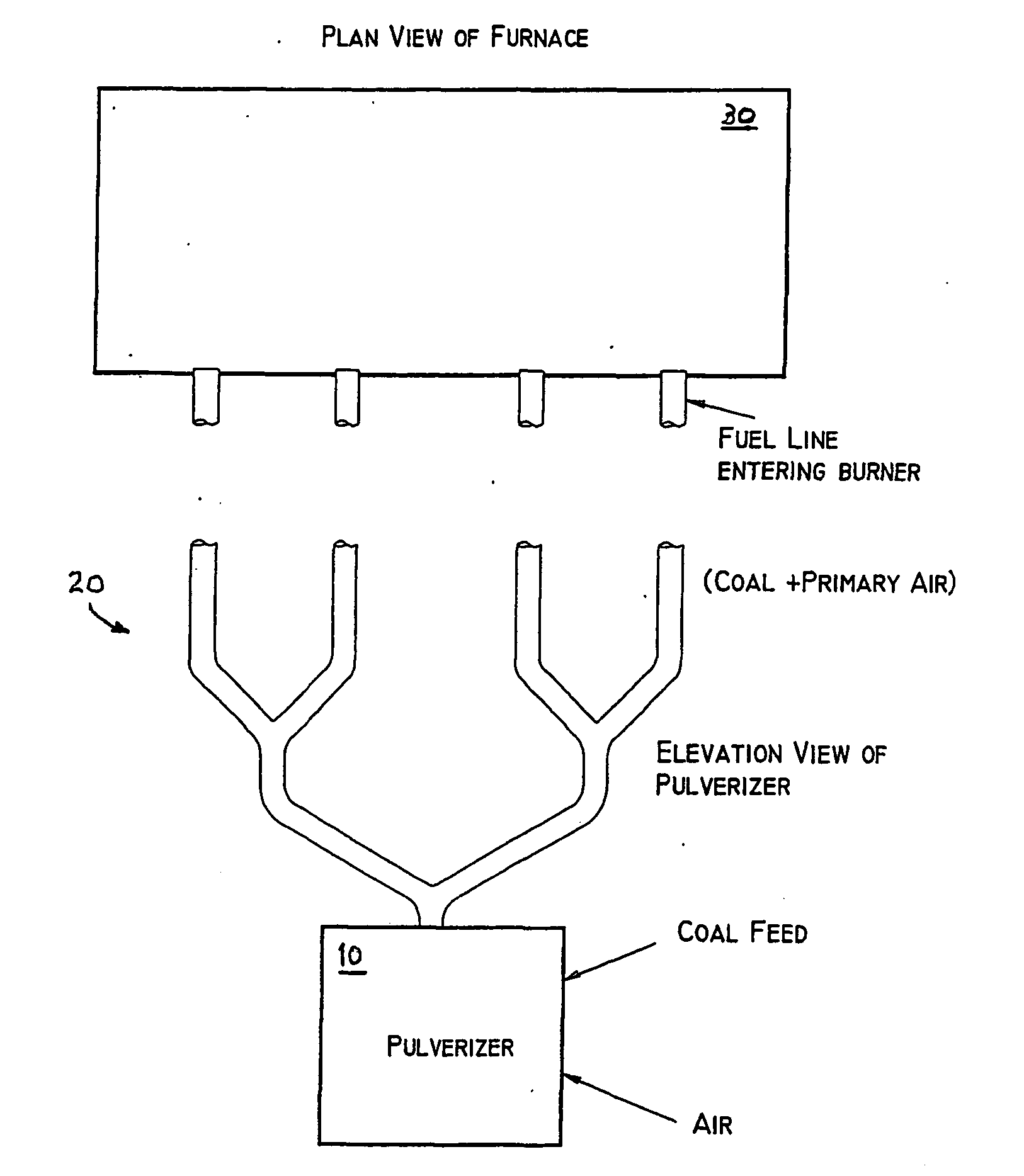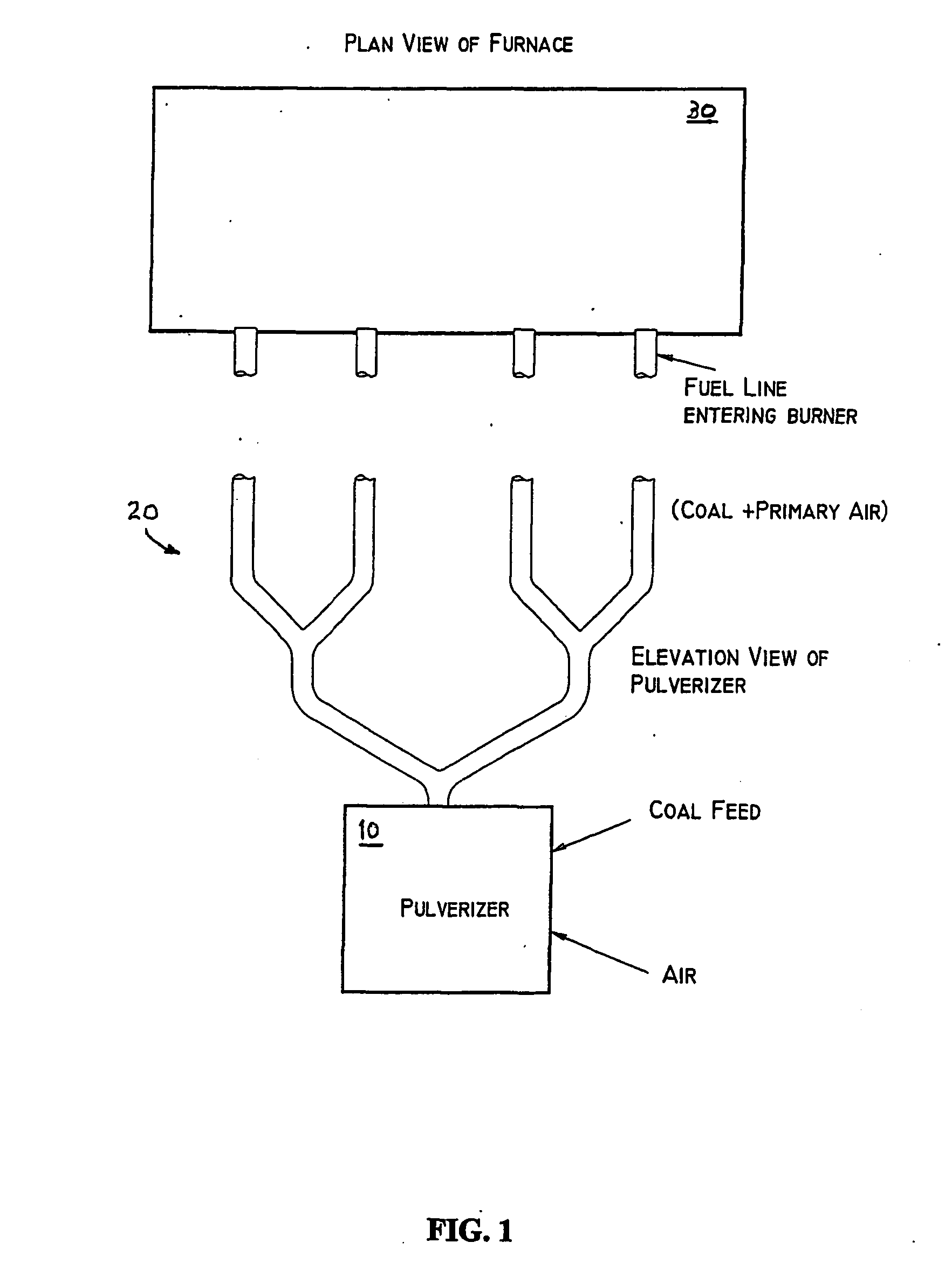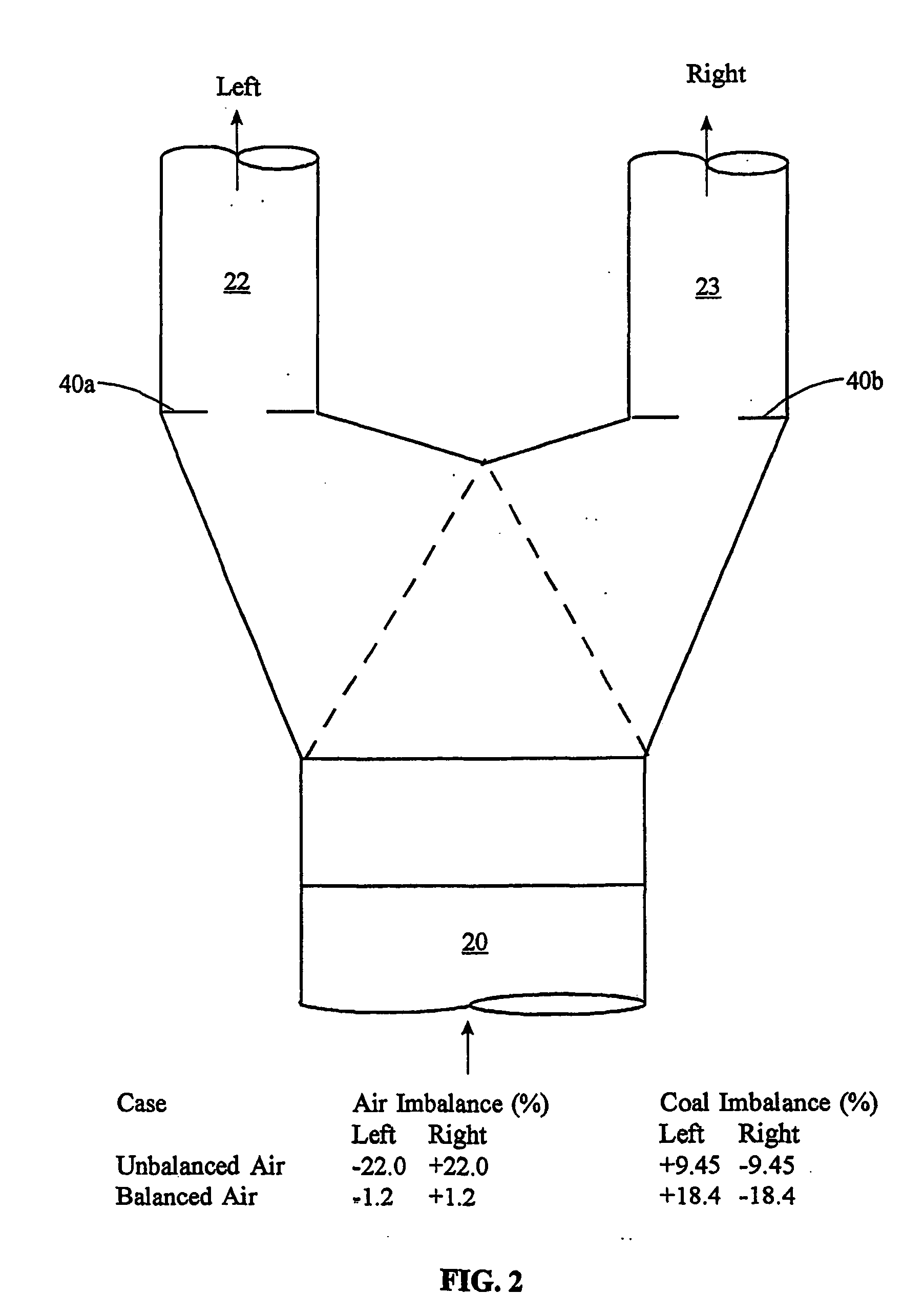Adjustable air foils for balancing pulverized coal flow at a coal pipe splitter junction
a splitter junction and air foil technology, applied in bulk conveyors, combustion processes, lighting and heating apparatus, etc., can solve the problems of burner imbalance, increased stack particulate emission levels, and different air flow rates of coal and primary air, so as to reduce the imbalance of coal flow and increase or decrease the flow of coal
- Summary
- Abstract
- Description
- Claims
- Application Information
AI Technical Summary
Benefits of technology
Problems solved by technology
Method used
Image
Examples
Embodiment Construction
As described above, the distribution of primary air in most coal boilers must be controlled separately by use of orifice-type restrictions in individual pipes. It is important for good combustion that the mechanism for controlling the coal flow distribution have negligible effect on the distribution of primary air. The present invention offers a solution in the form of adjustable wake-inducing airfoils installed at the inlet of a slotted riffler, for on-line control of the distribution of coal among the outlet pipes. The wake-inducing airfoils create primary air and particle wakes, and the distribution of pulverized coal and primary air to the coal boiler can be manipulated by controlling the location, size and characteristics of the wakes via the wake-inducing airfoils.
More specifically, and as shown in FIG. 6, one embodiment of the present invention consists of an array of long air foil-like wake-inducing objects 60 that are placed just upstream of the inlet to a conventional r...
PUM
 Login to View More
Login to View More Abstract
Description
Claims
Application Information
 Login to View More
Login to View More - R&D
- Intellectual Property
- Life Sciences
- Materials
- Tech Scout
- Unparalleled Data Quality
- Higher Quality Content
- 60% Fewer Hallucinations
Browse by: Latest US Patents, China's latest patents, Technical Efficacy Thesaurus, Application Domain, Technology Topic, Popular Technical Reports.
© 2025 PatSnap. All rights reserved.Legal|Privacy policy|Modern Slavery Act Transparency Statement|Sitemap|About US| Contact US: help@patsnap.com



